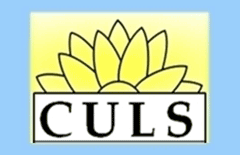Abstract
Librarians can become disheartened when carefully prepared handouts go in the recycle bin, or are left on chairs and tables when an instruction session ends. The realization that the instruction has become stale is even more discouraging. Recognizing a need for innovative library instruction after reading Matt Upson and Michael Hall’s Library of the Living Dead, and experiencing such student apathy towards their own instruction, the librarians from Kansas State University Salina and Kansas Wesleyan University were inspired to collaborate to create a graphic novel to use as part of library instruction since neither of us felt we could tackle this project alone. The goal was to create something unique, memorable, and that would give the reader the impression the library can be fun and lighthearted, while teaching basic research skills to encourage lifelong learning. This article will discuss the history and execution of the project, present survey results from both before and after using the graphic novel as part of library instruction, and look at the future of the project.
Creative Commons License

This work is licensed under a Creative Commons Attribution-Noncommercial-No Derivative Works 4.0 License.
Recommended Citation
Blackburn, Heidi and Wise, Kate
(2013)
"Legends of the Library Ninjas: New Frontiers in Library Instruction,"
Kansas Library Association College and University Libraries Section Proceedings:
Vol. 3:
No.
1.
https://doi.org/10.4148/culs.v1i0.1828
References
Downey, E. (2009). Graphic novels in curriculum and instruction collections. Reference & User Services Quarterly, 49(2), 181-188.
Heaney, M. J. (2007). Graphic novels: a sure bet for your library. Collection Building, 26(3), 72-76.
http://dx.doi.org/10.1108/01604950710761625
Johnson, R. (1990). Comic books for grown-ups: Introducing the graphic novel. The Reference Librarian, 12(27-28), 379-396.
http://dx.doi.org/10.1300/J120v12n27_25
Kansas State University Office of Planning and Analysis (2012). “Demographics by College”. Fact Book. Retrieved from Kansas State University website:
http://www.k-state.edu/pa/statinfo/factbook/student/studentfte.xlsx
Kansas Wesleyan University Admissions Enrollment and Financial Assistance (2009). 2009 Annual Report Section 4 – Student Demographics. Salina: Kansas Wesleyan University.
O’English, L., Matthews, J. G., & Lindsay, E. B. (2006). Graphic novels in academic libraries: From Maus to manga and beyond. The Journal of Academic Librarianship, 32 (2), 173-182.
http://dx.doi.org/10.1016/j.acalib.2005.12.002
Schwartz, M. (November 12, 2012). Academic librarians get graphic. Library Journal Online. Retrieved December 12, 2012 from http://lj.libraryjournal.com/2012/11/marketing/academic-librarians-get-graphic/.
Short, J. & Reeves, T. C. (2009). The graphic novel: A “cool” format for communicating to generation Y. Business Communication Quarterly, 72(4), 414-430.
http://dx.doi.org/10.1177/1080569909336464
The National Coalition Against Censorship, The American Library Association, & The Comic Book Legal Defense Fund (2006). Graphic Novels: Suggestions for Librarians. Retrieved from www.ncac.org/graphicnovels.
Toren, B. J. (2009). Bam! Pow! Graphic novels fight stereotypes in academic libraries: Supporting, collecting, promoting. Technical Services Quarterly, 28, 55-69.
http://dx.doi.org/10.1080/07317131.2011.524523
Upson, M. & Hall, M. (2011). Zombie attacks: How they can contribute to the success of your library. C&RL News, 72(7), 390-393.


